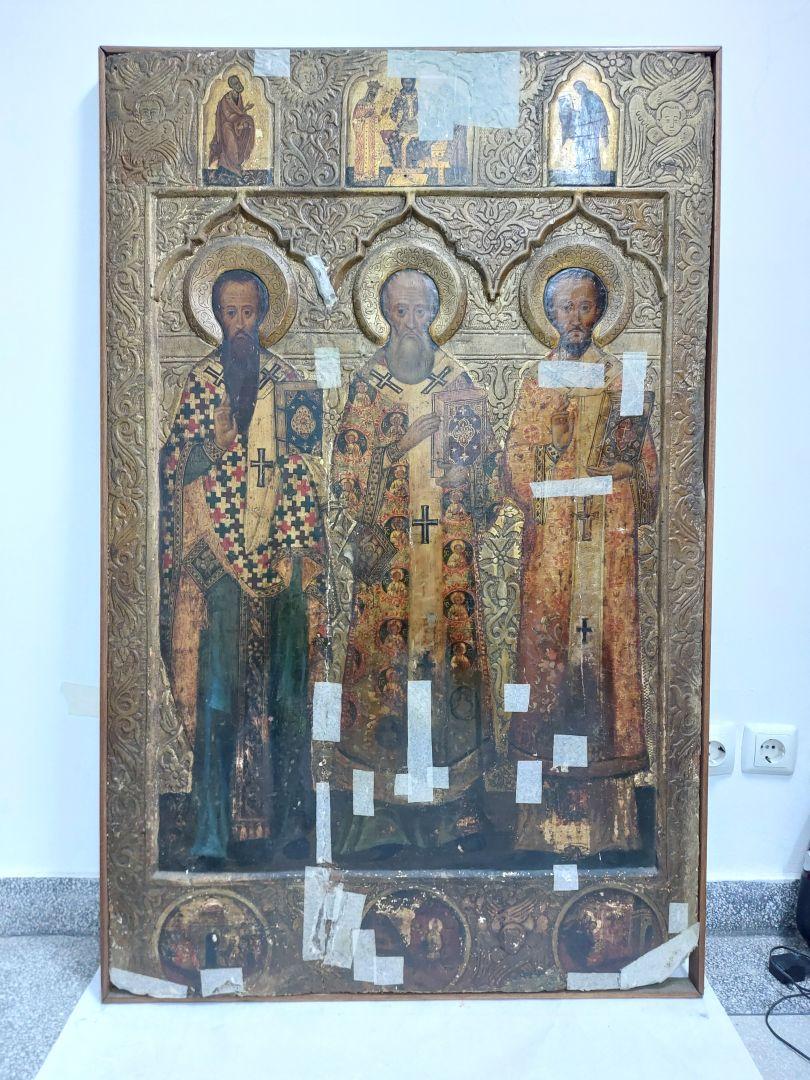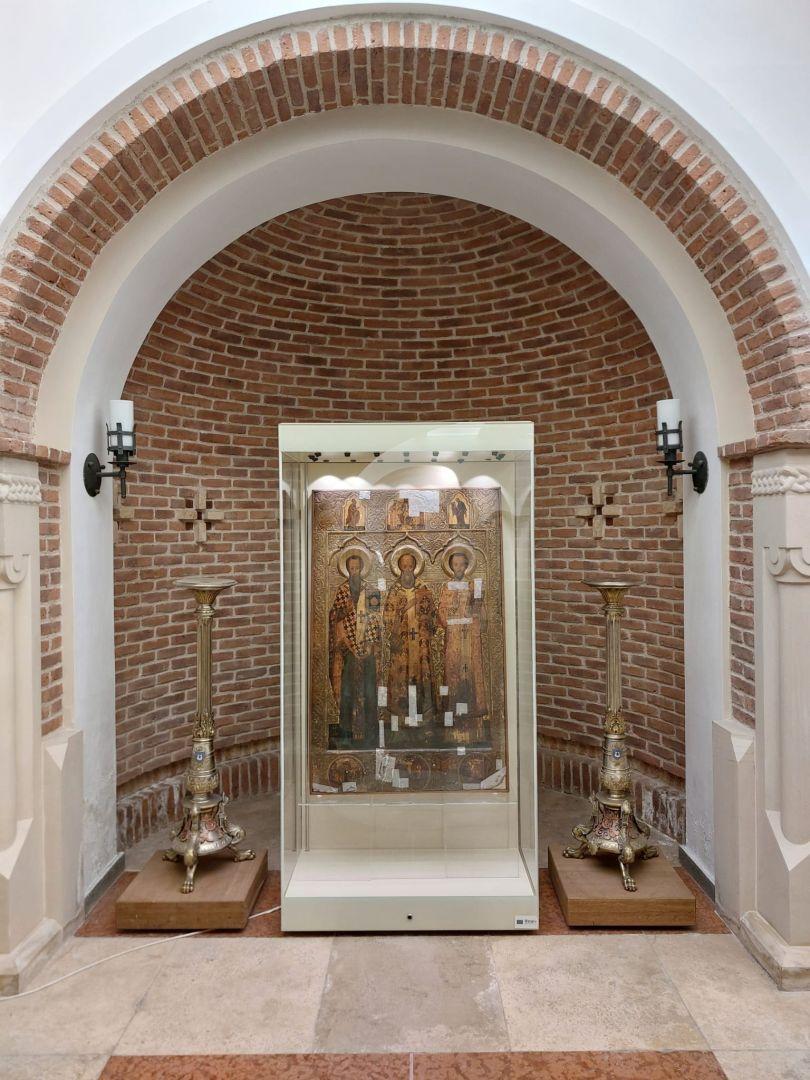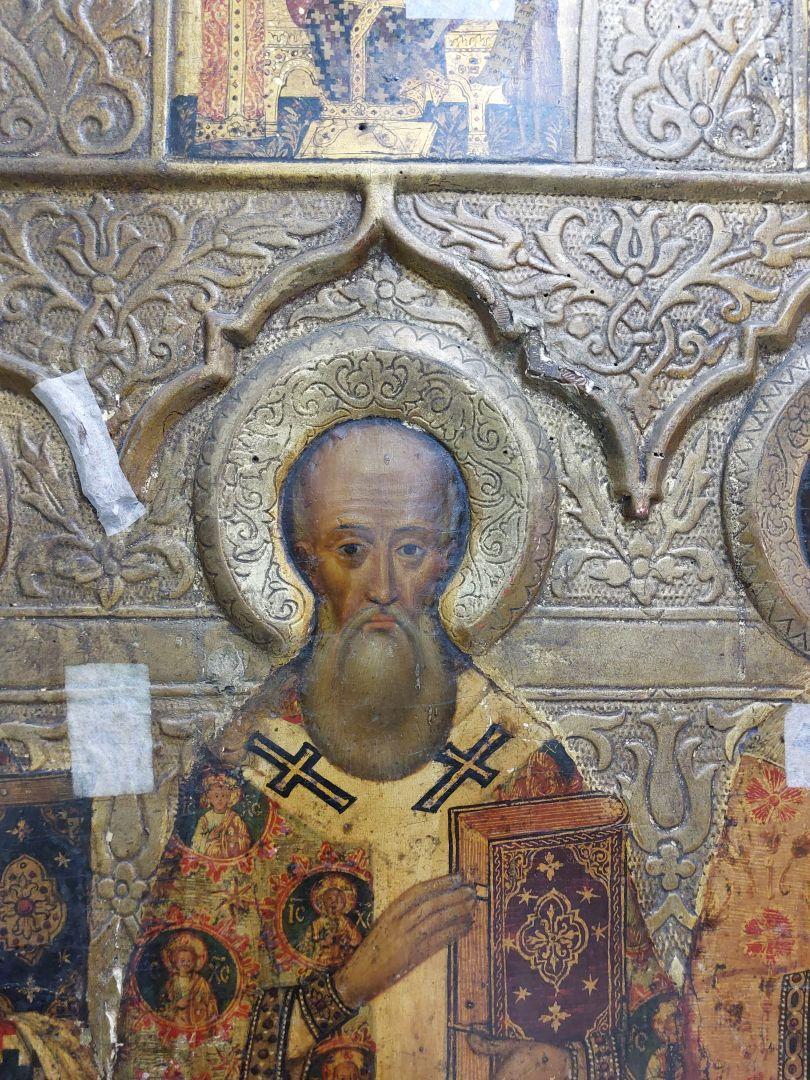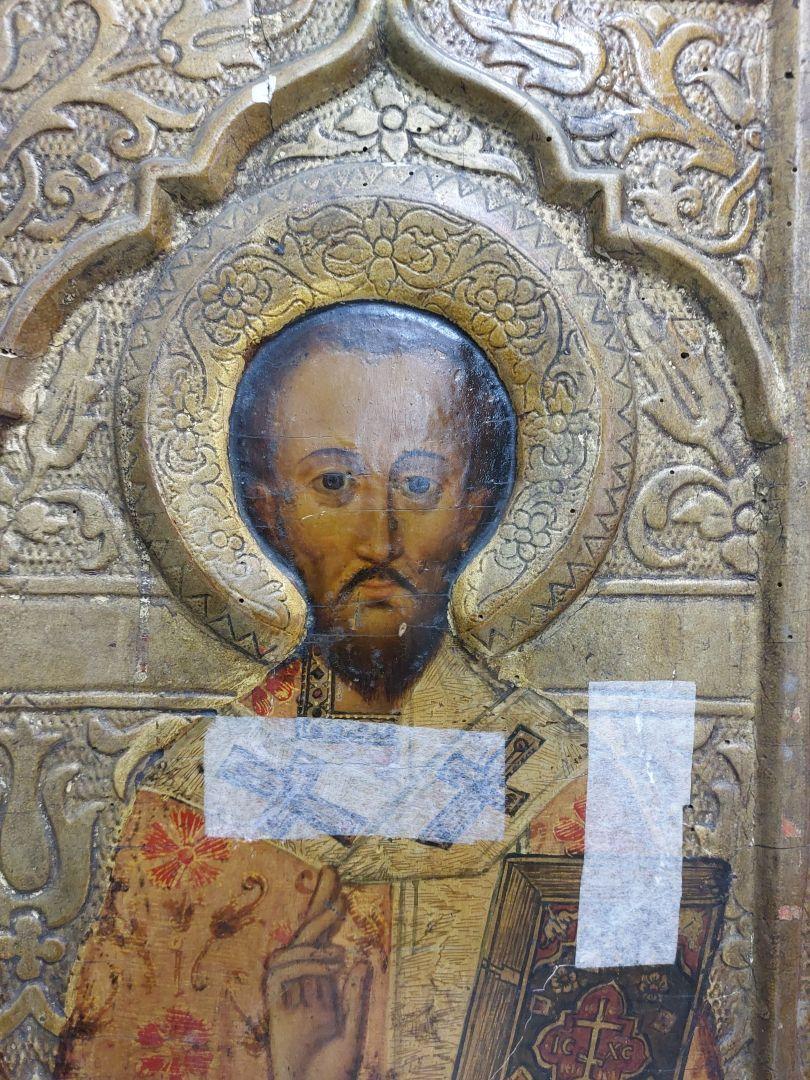
The Metropolitan Museum of Iași presents to the public, as the exhibit for January 2025, the icon of the " Coryphaeus of Orthodoxy" from the iconostasis of the "Three Hierarchs" Monastery in Iași.
The "Three Hierarchs" Monastery in Iași was founded by Prince Vasile Lupu between 1637 and 1639. The value of this architectural monument is well-known throughout Europe, particularly through the music of stone expressed on the entire surface of the church's exterior walls. The medieval frescoes, painted using the fresco technique, have been partially preserved, with some of them still surviving today, thanks to the work of French architect André Lecomte du Noüy. For example, the votive portrait of Prince Vasile Lupu and his family, along with other fresco fragments from the "Three Hierarchs" Monastery, are temporarily exhibited in the Baptistery Hall of the Metropolitan Museum of Iași.
The icon from the iconostasis of the "Three Hierarchs" Monastery in Iași is displayed in the Synaxar Hall of the Metropolitan Museum. It depicts the spiritual patrons of this church, the three great teachers of the world and hierarchs: Basil, Gregory, and John, known especially by their epitaphs: Saint Basil the Great - "a Roman among the Greeks," Saint Gregory the Theologian - "the lyre of the Holy Spirit," and Saint John Chrysostom – whose work "Homilies on Matthew" was considered "more valuable than Paris" (Joseph de Maistre), emphasizing the spiritual and theological value of these homilies compared to the glory and culture of the material world.
Each figure is represented standing, with radiant faces, and their vestments are depicted specifically in relation to their personality and role. Saint Basil the Great is depicted with a richly decorated garment featuring the motif of the Holy Cross. The darker shades of his robe contrast with the golden background of the icon, highlighting his firmness in defending the faith and his concern for organizing monastic life. The vestment of Saint Gregory the Theologian is painted in a lighter color palette, decorated with medallions featuring the representation of the Savior as a Child, emphasizing his role as a defender of the doctrine of the Incarnation. Saint John Chrysostom is depicted with a garment adorned with floral and cross motifs, suggesting his role as a preacher and defender of the Church through words.
The three halos in high relief and the richly decorated golden background with angels and various floral motifs give the icon a unique expressiveness, highlighting the importance of the saints depicted. The outer frame of the icon is enriched with three representations in the upper register of the panel, such as the "Deesis" scene flanked by the depictions of Saints Peter and Paul. Additionally, the lower register contains three medallions illustrating representative moments from the lives of the Three Hierarchs.
Therefore, we invite you to visit the Metropolitan Museum to admire these remarkable objects and to discover many other sacred treasures preserved by the Metropolis of Moldova and Bucovina throughout the years.
[1] Due to the originality of the restoration of the architectural jewels at the "Three Hierarchs" Monastery in Iași and the episcopal church of "The Dormition of the Mother of God" at the Monastery of Curtea de Argeș by the great French architect, these works have been included on UNESCO's tentative list of World Heritage.
Ana-Maria Barzaghideanu







